In January, the Program Director o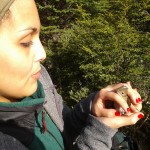 f Birder’s Exchange (BEx) Betty Petersen visited southern Patagonia on a trip organized by Mass Audubon. During that trip, she provided a BEx donation of binoculars and reference books on bird banding to support the long-term ornithological research coordinated by Tierra del Fuego National Park and the Austral Center for Scientific Research (CADIC). OSARA is proud to help facilitate the relationship between the American Birding Associations BEx Program and conservation and research agencies in southern Patagonia. This important contribution will help not only researchers and park rangers conduct their work, but also provide opportunities for tourism operators and lay people to be involved in the projects taking place in Tierra del Fuego.
f Birder’s Exchange (BEx) Betty Petersen visited southern Patagonia on a trip organized by Mass Audubon. During that trip, she provided a BEx donation of binoculars and reference books on bird banding to support the long-term ornithological research coordinated by Tierra del Fuego National Park and the Austral Center for Scientific Research (CADIC). OSARA is proud to help facilitate the relationship between the American Birding Associations BEx Program and conservation and research agencies in southern Patagonia. This important contribution will help not only researchers and park rangers conduct their work, but also provide opportunities for tourism operators and lay people to be involved in the projects taking place in Tierra del Fuego.
Category Archives: In the News!
Citizen Science in El Chalten
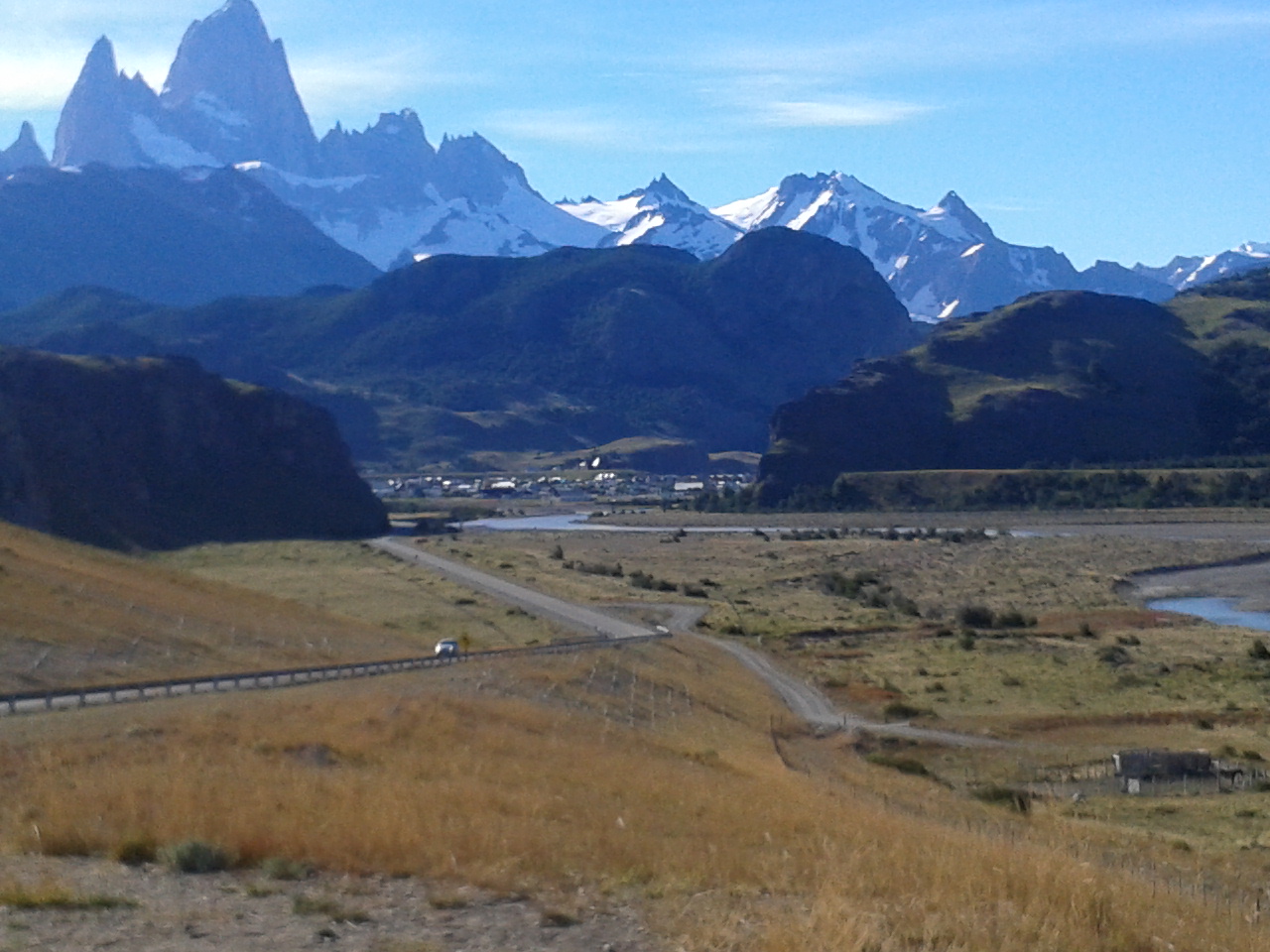 At the northern tip of Glaciers National Park in Argentine Patagonia, the small town of El Chalten is situated in an amazing and iconic landscape. However, in spite of being flanked by the Fitzroy Mountains and just over these incredible Andean peaks the icy expanse of the Southern Icefields, El Chalten is not removed from global ecological programs. In the past few years, residents and park rangers have reported sightings of the introduced invasive species – the American mink (Neovison vison).
At the northern tip of Glaciers National Park in Argentine Patagonia, the small town of El Chalten is situated in an amazing and iconic landscape. However, in spite of being flanked by the Fitzroy Mountains and just over these incredible Andean peaks the icy expanse of the Southern Icefields, El Chalten is not removed from global ecological programs. In the past few years, residents and park rangers have reported sightings of the introduced invasive species – the American mink (Neovison vison).
For this reason, the Argentine National Parks Administration’s Southern Patagonia Coordination Office has initiated a citizen science monitoring program to involve the local community in the detection of this species, to help managers determine quick and appropriate action. Managers, park rangers and scientists have created an education and involvement campaign that will last until February to create greater consciousness of the issue and also establish formal mechanisms for citizens to report their findings.
Long-Term Bird Research in Tierra del Fuego
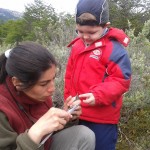 For the past 3 years, researchers at the Austral Center for Scientific Research have led an initiative to establish long-term avian research in Tierra del Fuego Island. With the support of Birder’s Exchange, these scientists are working with the staff of Tierra del Fuego National Park and local tourism operators to link the ecological research with other social actors and bring greater awareness and involvement of the citizens of Ushuaia to the forest birds that surround the world’s southernmost city. To date, this project has helped to establish seasonal patterns of forest avifauna and also determined specific vegetation and habitat conditions required for particular species. The goal of this program is not only to involved different social actors in the research being conducted in the national park, but also bring tools that decision makers can use in the future to improve the design of protected areas, specifically bringing a landscape level focus to the study of biota and habitat in southern Patagonia.
For the past 3 years, researchers at the Austral Center for Scientific Research have led an initiative to establish long-term avian research in Tierra del Fuego Island. With the support of Birder’s Exchange, these scientists are working with the staff of Tierra del Fuego National Park and local tourism operators to link the ecological research with other social actors and bring greater awareness and involvement of the citizens of Ushuaia to the forest birds that surround the world’s southernmost city. To date, this project has helped to establish seasonal patterns of forest avifauna and also determined specific vegetation and habitat conditions required for particular species. The goal of this program is not only to involved different social actors in the research being conducted in the national park, but also bring tools that decision makers can use in the future to improve the design of protected areas, specifically bringing a landscape level focus to the study of biota and habitat in southern Patagonia.
NatGeo Awards Grant to Study Riparian Forest Restoration in Tierra del Fuego
 The National Geographic Society recently awarded a Young Explorer Grant to Jon Henn, who together with Drs. Guillermo Martínez Pastur, Vanessa Lencinas and Christopher Anderson, prepared the project to study the methods needed to restore riparian Nothofagus forests in Tierra del Fuego after the removal of invasive beavers. Mr. Henn will work with researchers in Tierra del Fuego for a year with the support of a Fulbright Scholarship, as well. During that time, this team seeks to determine key information regarding the ecophysiology and regenerative capacity of Nothofagus trees in beaver meadows. In this context, the research will also be linked with other ongoing studies funded by the U.S. National Science Foundation to better understand and manage invasive species and ecosystem services in southern Patagonia (see below).
The National Geographic Society recently awarded a Young Explorer Grant to Jon Henn, who together with Drs. Guillermo Martínez Pastur, Vanessa Lencinas and Christopher Anderson, prepared the project to study the methods needed to restore riparian Nothofagus forests in Tierra del Fuego after the removal of invasive beavers. Mr. Henn will work with researchers in Tierra del Fuego for a year with the support of a Fulbright Scholarship, as well. During that time, this team seeks to determine key information regarding the ecophysiology and regenerative capacity of Nothofagus trees in beaver meadows. In this context, the research will also be linked with other ongoing studies funded by the U.S. National Science Foundation to better understand and manage invasive species and ecosystem services in southern Patagonia (see below).
Fulbright Scholar Visits UMAG for Teaching and Research
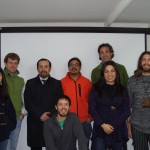 Dr. Josh Donlan, director of Advanced Conservation Strategies, recently teamed up with Dr. Christopher Anderson to teach a novel course in the Universidad de Magallanes, entitled “Pushing the Frontiers of Conservation by Integrating Novel “Social” Dimensions to Research and Decision Making.” Donlan’s visit corresponds to a U.S. Scholar Award given to him to collaborate with the UMAG and Universidad de Chile, in association with the Wildlife Conservation Society and the Chilean agency in charge of managing invasive species. During his two visits in 2011 and 2012, Dr. Donlan will collaborate with researchers and students on teaching and research projects, but also advise the design and implementation of control and eradication efforts for invasive beavers.
Dr. Josh Donlan, director of Advanced Conservation Strategies, recently teamed up with Dr. Christopher Anderson to teach a novel course in the Universidad de Magallanes, entitled “Pushing the Frontiers of Conservation by Integrating Novel “Social” Dimensions to Research and Decision Making.” Donlan’s visit corresponds to a U.S. Scholar Award given to him to collaborate with the UMAG and Universidad de Chile, in association with the Wildlife Conservation Society and the Chilean agency in charge of managing invasive species. During his two visits in 2011 and 2012, Dr. Donlan will collaborate with researchers and students on teaching and research projects, but also advise the design and implementation of control and eradication efforts for invasive beavers.
Linking the Public, Private and Academic Sectors for Sustainable Forest Management in Tierra del Fuego
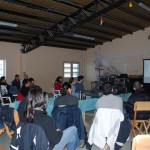 Dr. Guillermo Martínez Pastur, a respected forester and leader of the Forest Resource Research Group in the Austral Center for Scientific Research (CADIC-CONICET, Ushuaia, Argentina) was recently invited by the government of Sweden to be part of an elite team including 15 world-renowned forestry researchers to help rationalize the sustainable use of Scandinavian forests. Upon his return to Tierra del Fuego, Dr. Martínez Pastur convened a local workshop, held in the town of Tolhuín, to report the findings of this global effort to understand forestry in high latitudes, including experiences from Europe, North America and Tasmania.
Dr. Guillermo Martínez Pastur, a respected forester and leader of the Forest Resource Research Group in the Austral Center for Scientific Research (CADIC-CONICET, Ushuaia, Argentina) was recently invited by the government of Sweden to be part of an elite team including 15 world-renowned forestry researchers to help rationalize the sustainable use of Scandinavian forests. Upon his return to Tierra del Fuego, Dr. Martínez Pastur convened a local workshop, held in the town of Tolhuín, to report the findings of this global effort to understand forestry in high latitudes, including experiences from Europe, North America and Tasmania.
As Dr. Martinez Pastur reported, the measures implemented in the Argentine portion of Tierra del Fuego Island are exemplary on a global scale, with up to 70% of a harvested forest being left for conservation. However, he also noted that many of these best practices are based on a local culture that has involved scientists in the development of their business models and should now be codified into rules and laws to prevent future companies lacking this ethic to become established and viciate the virtuous cycle that has been established.
According to Dr. Christopher Anderson, also invited to attend the workshop, “what really jumps to my mind about this effort is that Guillermo’s team is able to convene a group of people willing to spend a day discussing these issues of sustainable forest management that come from the public sector, including the Provincial Forest and Parks Services, the private sector, including representatives from the two leading forestry companies in Tierra del Fuego that make of 60% of forest extraction, and academics from both the CADIC and Chile.”
UMAG Student Wins CONCIYT Scholarship
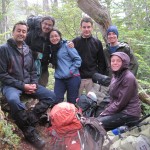 Ernesto Davis, M.S. candidate at the Universidad de Magallanes (left in photo), recently became one of the first UMAG students to obtain a scholarship from the Chilean National Science Commission (CONICYT). According to the evaluation, Mr. Davis was also the highest ranked applicant in the whole country. Previously, this student was also supported by OSARA and his thesis seeks to develop a habitat occupation model for invasive North American beavers in the Fuegian Archipelago.
Ernesto Davis, M.S. candidate at the Universidad de Magallanes (left in photo), recently became one of the first UMAG students to obtain a scholarship from the Chilean National Science Commission (CONICYT). According to the evaluation, Mr. Davis was also the highest ranked applicant in the whole country. Previously, this student was also supported by OSARA and his thesis seeks to develop a habitat occupation model for invasive North American beavers in the Fuegian Archipelago.
UNT Fulbrighter in Chile
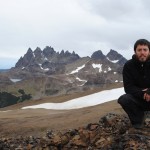 The first month of my Fulbright-Chile experience has already by far exceeded all my expectations. Once arriving to Punta Arenas I joined a group of students that I would be spending the next few weeks with for an international, interdisciplinary field course on conservation in the Cape Horn Biosphere Reserve. On arrival to Puerto Williams, the southern most town in the world, we began a number of activities with the park’s researchers. Our purpose was to gain a hands-on education in and contribute towards conservation through a series of multidisciplinary activities including group discussions, short lectures, artistic expression, community interaction, and field research among many other
The first month of my Fulbright-Chile experience has already by far exceeded all my expectations. Once arriving to Punta Arenas I joined a group of students that I would be spending the next few weeks with for an international, interdisciplinary field course on conservation in the Cape Horn Biosphere Reserve. On arrival to Puerto Williams, the southern most town in the world, we began a number of activities with the park’s researchers. Our purpose was to gain a hands-on education in and contribute towards conservation through a series of multidisciplinary activities including group discussions, short lectures, artistic expression, community interaction, and field research among many other
field activities.
I was given the responsibility of teacher’s assistant (TA) for the course. As a recently recruited graduate student at the University of North Texas my advisors and Fulbright host thought it a great way to introduce me to the region while allowing me to support the program as Fulbright student.
The course, entitled Tracing Darwin’s Path, is a newly developed form of conservation which is conscious of and emphasizes the idea that biodiversity is inextricably linked to and supported by cultural diversity. The course introduced approaches and methods for developing solutions to local and global conservation issues; cultural and environmental. Specific highlights which came up often in the interviews were: a three day ferry ride through the beagle channel to Puerto Williams; three nights camping at Róbolo Lake; a basket weaving lesson with a member of the Yaghan indigenous community; the ability to assist in the research occurring on Navarino Island; and the international experience gained from interacting with students from all over the world and from many different disciplines.
When finished with the course most of us who were flying back to Punta Arenas from Puerto Williams were held up due to the protests occurring in Punta Arenas at the time over gas rate hikes implemented by the national government. Though for some it became a bit of an inconvenience, for me and most of the others, it gave the group some cultural insight on regional political issues. We felt compassion for the people fighting to keep affordable a resource needed for survival in the cold rainy climate of the Magallanic region.
Once I made it back to Punta Arenas I embarked on the first of a series of annual navigations to explore the spectacular isolated sounds of Tierra del Fuego with some of the world’s leading bryologists, and a team of Chilean students from the UMAG. The main intention of the navigations is to survey the region for its mosses and liverworts. All in all, the navigation was an unforgettable experience where I traversed terrains seen by few. Those images of the strikingly
sculpted mountains and brilliantly blue creeping glaciers will stay with me forever.
For the next two months I will be living and traveling between Punta Arenas and Puerto Williams for participatory research as a means to adjust my broader research methods to the contours of the local culture. My goals for the upcoming month are to refine my project methodology so as to be ready to begin field work in; make contacts with regional scientists and natural resource managers; summarize the results of my interviews, and continue developing a paper that I and a few others were inspired to start during the course.
Jean-Paul Zagarola, taken from the January-March Fulbright Newsletter 2011
Conservation Biologist Richard Primack Visits UNT
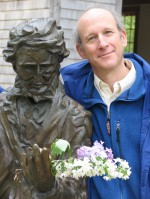 A Boston University professor presented UNT students with a homegrown look at climate change Friday in a lecture that detailed the conservation biologist’s findings from a study of Henry David Thoreau’s former stomping grounds. Richard Primack and a team of students and biologists have spent the last eight years observing the same birds and plants once documented by the famous author and naturalist. Their comparisons of Thoreau’s environment to today’s Concord, Mass., area indicate that climate change is not exclusive to places reserved for National Geographic covers, Primack said.
A Boston University professor presented UNT students with a homegrown look at climate change Friday in a lecture that detailed the conservation biologist’s findings from a study of Henry David Thoreau’s former stomping grounds. Richard Primack and a team of students and biologists have spent the last eight years observing the same birds and plants once documented by the famous author and naturalist. Their comparisons of Thoreau’s environment to today’s Concord, Mass., area indicate that climate change is not exclusive to places reserved for National Geographic covers, Primack said.
“All of the examples of climate change seem to be from far away … People don’t see it happening in the plants and animals that are right around them,” Primack said in front of an audience of more than 75 people during the Friday lecture in the Environmental Science building. “The goal was to detect climate change locally to communicate this story to the general public.”
Excerpt from NT Daily by Drew Gaines / Senior Staff Writer
New York Botanical Garden Teams Up with Universidad de Magallanes in Expedition to Describe the Mosses of Cape Horn
 Since 2002, researchers from the New York Botanical Garden (NYBG) and the Universidad de Magallanes to better understand and conserve the amazing diversity of mosses, lichens and liverworts found in the Cape Horn archipelago. Early results of this collaboration showed that Cape Horn hosts 7% of the world’s diversity of non-vascular plants on only 0.01% of the planet’s surface area. Using this information, the Omora Park’s team of students, philosophers and scientists turned this ecological fact into socially relevant results, including part of the justification of the creation of the Cape Horn Biosphere Reserve (CHBR) in 2005.
Since 2002, researchers from the New York Botanical Garden (NYBG) and the Universidad de Magallanes to better understand and conserve the amazing diversity of mosses, lichens and liverworts found in the Cape Horn archipelago. Early results of this collaboration showed that Cape Horn hosts 7% of the world’s diversity of non-vascular plants on only 0.01% of the planet’s surface area. Using this information, the Omora Park’s team of students, philosophers and scientists turned this ecological fact into socially relevant results, including part of the justification of the creation of the Cape Horn Biosphere Reserve (CHBR) in 2005.
In 2010, this inter-institutional and international team of researchers, including not only NYBG and the University of North Texas, but also individuals from the Field Museum, Duke University and the California Academy of Sciences, obtained new funding from the U.S. National Science Foundation to conduct a series of month-long, boat-based expeditions in Cape Horn between 2011 and 2014. These trips to remote areas that are difficult to access and infrequently visited will allow scientists to collect and identify specimens with the goal of creating a complete inventory of the moss and liverwort species found in the archipelago and publish a definitive work on the Bryoflora of Cape Horn.
Through the SABCP, this basic science project is also linked with local research, education and conservation initiatives based at the Omora Park, which is one of three networked long-term socio-ecological research sites in Chile. For example, the Omora Park has been developing a novel special interest tourism project with the support of the Chilean Ministry of Economy’s Corporation for Business Development (CORFO), which is enabling the improvement of training, publications and infrastructure for the implementation of “Tourism with a Hand Lens”, a unique opportunity for local tourism operators to obtain economic benefit by leading visitors on a discovery of the singular diversity of bryophytes and lichens found in the Omora Park and Cape Horn archipelago.
Plus, in addition to the funding from the NSF, partial support of the current expedition (January-February 2011) has also been provided by the Weeden Foundation, based in New York, to aid the participation of Chilean students from the Universidad de Magallanes’ Masters of Science in Sub-Antarctic Conservation Program. In this way, students working on projects in marine science, invasive species, moss/insect interactions and watershed ecosystem services were also able to participate with the prestigious team of bryologists, thereby facilitating broader impacts of this expedition in the areas of interdisciplinary research and training of students from the U.S. and Chile.
BBC/Discovery Channel Film Documentary in the Cape Horn Biosphere Reserve
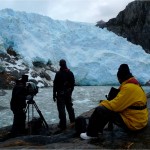 Cape Horn is globally known as a landmark for sailing and as the closest point of land to Antarctica, where hurricane force winds and torrential rains lash the coast year round. However, increasingly, thanks in part to the work of the Sub-Antarctic Biocultural Conservation Program (SABCP), it is becoming equally renowned for its diverse climates and ecosystems that create a unique combination of biological and cultural diversity.
Cape Horn is globally known as a landmark for sailing and as the closest point of land to Antarctica, where hurricane force winds and torrential rains lash the coast year round. However, increasingly, thanks in part to the work of the Sub-Antarctic Biocultural Conservation Program (SABCP), it is becoming equally renowned for its diverse climates and ecosystems that create a unique combination of biological and cultural diversity.
For these reasons, a co-produced series between the BBC (UK) and the Discovery Channel (USA) came to the Omora Park to film a program about the role of the sun in affecting weather patterns and in turn the role of weather in influencing ecosystems and biodiversity. Tentatively entitled 23 Degrees, referring to the Earth’s tilt off the sun’s axis, the series will feature three hour-long programs that range from the cold Canadian arctic to the dry Atacama Desert.
According to producer Charles Colville, the decision to film in the Cape Horn Biosphere Reserve was to look at “weather in the Southern Hemisphere during the austral summer, especially the effect of the very windy climate on the ecosystems in southern Patagonia and Tierra del Fuego…. and the effect of the climate on the development of the ecosystem, especially the ‘miniature forests’ [mosses, lichens and liverworts] that have evolved there.”
The team visited two principal areas. First, they filmed on La Bandera Mountain, showcasing the lichens and cushion plants that are adapted to the harsh conditions of wind, cold and UV in the high Andean zones of the Omora Park. Then, navigating aboard the Santa Maria Australis, the group visited the western portion of the archipelago, where Dr. Christopher Anderson, coordinator of the SABCP, emphasized the importance of the extremely wet conditions there in creating a “moss kingdom” in which tiny plants such as mosses and liverworts are not only diverse, but extremely abundant and even dominate the landscape.
Additionally, the show will discuss the importance of Cape Horn as a world priority research site for un-polluted and “virgin” forests, as the sub-Antarctic ecoregion has nearly no air or water pollution and experiences extremely low impacts from modern human society. Therefore, filming also included visits to remote glaciers along the Darwin Mountain Range of Tierra del Fuego Island.
According to Dr. Anderson, “for years the sub-Antarctic ecoregion has been overlooked by researchers, conservationists and even documentary film makers. Through the long-term socio-ecological research being pioneered at the Omora Park and in the Cape Horn Biosphere Reserve, we hope to not only revert those trends in research, but also make real contributions to social wellbeing in the far south by promoting sustainable activities such as ecotourism that take into account these unique ecosystems and species that make the archipelago special on a global level.
The series is set to air in February 2012 and will be hosted by Kate Humble, a highly regarded natural history television presenter for the BBC
For more information: http://www.bbc.co.uk/blogs/23degrees/. Photo source: Ben Finney/BBC/Discovery Channel
Assistant Secretary of Foreign Relations Visits Omora Park with Delegation to Strengthen Links with Antarctica
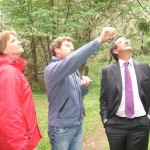 Hosted by the Chilean Antarctic Institute’s Director Dr. Jose Retamales, on 31 January 2011 a delegation of officials from the Ministry of Foreign Relations visited Puerto Williams, capital of the Chilean Antarctic Province, as part of a national initiative to re-evaluate and strengthen ties in research, logistical support and tourism between the Magallanes and Chilean Antarctic Region and the “white continent”.
Hosted by the Chilean Antarctic Institute’s Director Dr. Jose Retamales, on 31 January 2011 a delegation of officials from the Ministry of Foreign Relations visited Puerto Williams, capital of the Chilean Antarctic Province, as part of a national initiative to re-evaluate and strengthen ties in research, logistical support and tourism between the Magallanes and Chilean Antarctic Region and the “white continent”.
For these reasons, Assistant Secretary of Foreign Relations Fernando Schmidt, the Regional Intendenta Ms. Liliana Kusanovic, and the Governor of the Chilean Antarctic Province Mr. Nelson Carcamo led a group of ambassadors, authorities, scientists and tourism entrepreneurs to the world’s southernmost town.
Mr. Schmidt, who 25 years ago was the Chilean consul in the city of Ushuaia (part of the Argentine portion of Tierra del Fuego), was extremely content to return to these high austral latitudes and expressed his surprise to see the great changes that had taken place in the interim, including the construction of the new Martin Gusinde Anthropological Museum and the creation of the Omora Ethnobotanical Park.
The delegation was received at the Omora Park’s new Cape Horn Field Station by Dr. Christopher Anderson, Coordinator of the Sub-Antarctic Biocultural Conservation Program (SABCP). There, Dr. Anderson discussed the importance of the investment made by the Millennium Scientific Initiative (Ministry of Economy) and the Basal Financing Program (CONICYT) to achieve the construction of this landmark and the fact that this achievement had been made possible due to the support not only of major national programs, but also the institutional alliance of the SABCP created through the collaboration of the Institute of Ecology and Biodiversity, the Universidad de Magallanes and the University of North Texas, among other partners.
At the same time, the group discussed the next phase for the research, education and conservation agenda for the sub-Antarctic archipelago and its links with Antarctica through the building of a Cape Horn Research Center. This project has already received the support of renowned architects, including the firms involved in the building of Latin America’s tallest building in Santiago, as well as the Clinton Library in the United States. In the short-term, it is expected to develop the design of this project in 2011, to begin construction in 2012 with the support of the regional government and national and international partners.
Afterwards the group toured the Omora Park, where the delegation was able to appreciate Cape Horn’s unique biodiversity as well as the new trail infrastructure made possible through the INNOVA-CORFO project entitled “Ecotourism with a Hand Lens”. At the Park, researchers and students from Chile, Spain, Argentina and France demonstrated to the authorities the power of the link between academia and society being developed in the park. For example, a group of Spanish lichenologists from the Universidad Complutense de Madrid, who are operating long-term research project in Antarctic and at the Omora Park, indicated to the delegation that Cape Horn is like the canary in the coal mine regarding global change. What happens in terms of global warming is happening here first, before even Antarctica. For that reason, these scientists are working in the high-Andean sites of the Omora Park and simultaneously on the Antarctic Peninsula.
Similarly, authorities and students working with the regional invasive species control program, coordinated by the Chilean Agriculture and Livestock Service, demonstrated how scientists from the Omora Park are interacting with decision makers to implement practical policies such as the control of mink and beaver in the Cape Horn Biosphere Reserve.
In turn, the assembled group of graduate students also conversed with Governor Carcamo the importance of the continuous education program led by Omora Park that brings together world leading scientists with graduate students from the regional and other universities and teachers and students from the local schools, integrating science and sustainability issues into the formal and informal education activities in the Magellanic sub-Antarctic ecoregion.
For her part, Intendenta Kusanovic indicated that it is “extremely important for the Ministry of Foreign Relations to be here because Antarctic policy depends upon them and that policy at the same time is very linked with our region. We should grow as a gateway to Antarctica, especially Puerto Williams, and particularly we need to development appropriate infrastructure. Thanks to the interest of the Assistant Secretary, we are going to advance in this area.”
Omora Park Hosts “Travel Learn” Program
 The University of North Texas’ Center for Adult and Lifetime Learning (CALL) selected the Cape Horn Biosphere Reserve as one of its first ‘Travel Learn’ trips. From 7-16 January, these intrepid travelers visited the Cape Horn Biosphere Reserve aboard the Stella Australis, landing in major world heritage sites like Cape Horn Island and Wulaia Bay, where Darwin and Fitz Roy encountered the Yahgan tribe.
The University of North Texas’ Center for Adult and Lifetime Learning (CALL) selected the Cape Horn Biosphere Reserve as one of its first ‘Travel Learn’ trips. From 7-16 January, these intrepid travelers visited the Cape Horn Biosphere Reserve aboard the Stella Australis, landing in major world heritage sites like Cape Horn Island and Wulaia Bay, where Darwin and Fitz Roy encountered the Yahgan tribe.
The Travel Learn team was joined by 10 researchers and colleagues of UNT and UMAG, including Dr. Claudio Wernli, executive director of the Millennium Scientific Initiative, which is a major funding source for the recently inaugurated Cape Horn Field Station.
Hosted by UNT Provost Dr. Warren Burggren, this trip provided participants a unique and close up look into the ecosystems and biota and also the important research being pioneered by the alliance of institutions led by the University of North Texas, the Universidad de Magallanes and the Institute of Ecology and Biodiversity.
Inauguration of Cape Horn Field Station
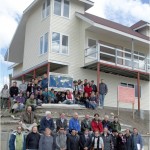 An alliance between the Universidad de Magallanes, the Institute of Ecology and Biodiversity, the University of North Texas and several U.S. and Chilean non-profit organizations has opened the world’s first environmental philosophy, science and policy field station at the southern tip of Chile in the village of Puerto Williams.
An alliance between the Universidad de Magallanes, the Institute of Ecology and Biodiversity, the University of North Texas and several U.S. and Chilean non-profit organizations has opened the world’s first environmental philosophy, science and policy field station at the southern tip of Chile in the village of Puerto Williams.
The new Cape Horn Field Station supports an international network for interdisciplinary environmental research opportunities for faculty, students and affiliated research scholars, helping to place UNT’s work at the forefront of conservation and study in the Cape Horn archipelago.
“The goal is to have students doing research in Chile year-round so they can have a direct experience in crossing language barriers and working with students from other countries, scientists and the local society,” said Dr. Christopher Anderson, UNT assistant research professor of biology and coordinator of the Sub-Antarctic Ecosystems and Biocultural Conservation research cluster and program. “Our mission is not just to do research but to develop long-term, working relationships with local authorities and community members and to make the research socially relevant.”
The research cluster and program has worked to integrate ecological and social aspects of research, education and conservation into a long-term research, education and conservation program. The program’s unique integration of the sciences and ethics with an emphasis on ethno-ecology and environmental philosophy coincides with UNT’s doctoral program that focuses on environmental ethics and philosophy.
Students, scientists, government and university officials, and visitors attended the inauguration, including officials from the Universidad de Magallanes and the Institute of Ecology and Biodiversity, UNT Provost and Vice President of Academic Affairs Warren Burggren, UNT Vice President of Research Vish Prasad and Edgar Muñoz, Commander of the Beagle Channel Naval District. Nelson Carcarmo, Governor of the Chilean Antarctic Province presided over the ribbon-cutting ceremony.
The two and a half story facility has a kitchen, library, classrooms, computer area and laboratory for processing and storing research samples and other field equipment. The station also provides office and lodging space for up to 15 students and researchers during courses and expeditions in the Cape Horn region. Previously, research activities were based at a Universidad de Magallanes-owned facility in Puerto Williams that housed six people.
The new research facility sits inside the UNESCO Cape Horn Biosphere Reserve, a pristine ecoregion with mountains, glaciers and forests that offers a rich environment for ecological research and conservation activities.
The construction of the new field station was funded through a $15 million grant from the CONICYT, the Chilean equivalent of the U.S. National Science Foundation as well as funds from UNT. The grant will help support research for the next 10 years.
Last year, UNT and the Universidad de Magallanes co-published a guidebook of the approximate 50 species of birds in Omora Park, including scientific and local knowledge of each species. Future projects include creating a similar guidebook for lichens, mosses and liverworts, known as the “Miniature Forests of Cape Horn,” and translating philosophy texts from Spanish to English and English to Spanish.
